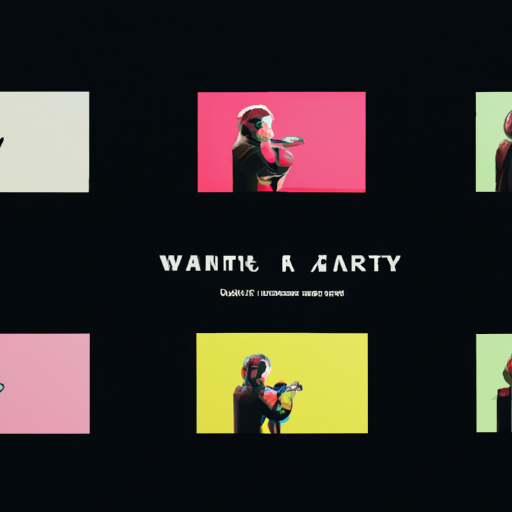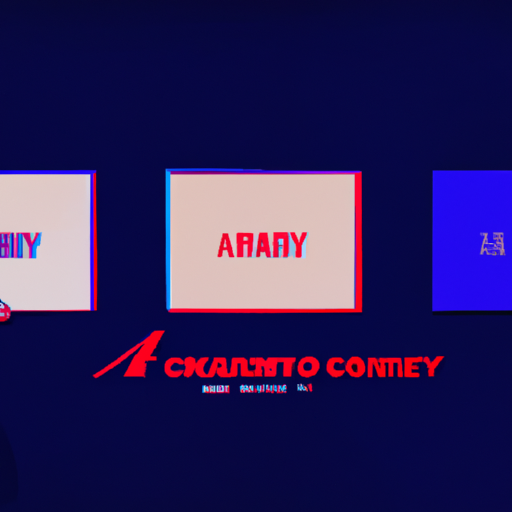
-
Table of Contents
Title Sequence Design in Cinema: Artistic Openings

Introduction: The Power of Title Sequences
Title sequences in cinema have evolved from simple text overlays to elaborate and visually stunning works of art. These sequences serve as the opening statement of a film, setting the tone, introducing key themes, and captivating the audience from the very beginning. In this article, we will explore the importance of title sequence design in cinema and how it has become an integral part of the filmmaking process.
The Evolution of Title Sequences
1. Early Beginnings
- In the early days of cinema, title sequences were primarily used to provide basic information such as the film’s title, cast, and crew.
- These sequences were often simple and text-based, lacking the artistic flair seen in modern title sequences.
2. Saul Bass: A Pioneer in Title Sequence Design
- Saul Bass, a renowned graphic designer and filmmaker, revolutionized title sequence design in the 1950s and 1960s.
- His iconic title sequences for films like “Vertigo” and “Psycho” incorporated innovative visual techniques and storytelling elements.
- Bass’s work demonstrated that title sequences could be more than just informative; they could be an integral part of the cinematic experience.
3. The Rise of Digital Technology
- With the advent of digital technology, title sequence design entered a new era.
- Artists and designers now had access to a wide range of tools and techniques to create visually stunning and immersive title sequences.
- Computer-generated imagery (CGI) and motion graphics became common elements in title sequences, allowing for greater creativity and experimentation.
The Role of Title Sequences in Filmmaking
1. Setting the Tone
- Title sequences are the first impression a film makes on its audience.
- They establish the mood, atmosphere, and overall tone of the film.
- For example, the dark and mysterious title sequence of “Se7en” immediately immerses the audience in the film’s gritty and suspenseful world.
2. Introducing Key Themes
- Title sequences can also introduce key themes and motifs that will be explored throughout the film.
- They provide a visual and symbolic representation of the film’s central ideas.
- For instance, the title sequence of “Catch Me If You Can” uses a playful and dynamic animation style to reflect the film’s themes of deception and cat-and-mouse chase.
3. Enhancing the Narrative
- Title sequences can enhance the narrative by foreshadowing events or providing important contextual information.
- They can create anticipation and build suspense, drawing the audience deeper into the story.
- One notable example is the title sequence of “Fight Club,” which uses a series of subliminal images to hint at the film’s twist ending.
Case Studies: Memorable Title Sequences
1. “Enter the Void”
- The title sequence of Gaspar Noé’s “Enter the Void” is a mesmerizing and hallucinatory experience.
- It combines intricate visual effects, vibrant colors, and a pulsating soundtrack to immerse the audience in the film’s psychedelic world.
- This sequence sets the stage for the film’s exploration of life, death, and the afterlife.
2. “The Girl with the Dragon Tattoo”
- David Fincher’s “The Girl with the Dragon Tattoo” features a dark and haunting title sequence created by design studio Blur Studio.
- The sequence combines elements of bondage, technology, and Scandinavian folklore to reflect the film’s themes of violence, mystery, and female empowerment.
- It is a prime example of how a title sequence can establish the mood and themes of a film in a visually striking way.
The Impact of Title Sequences on Audience Engagement
1. Creating Anticipation
- A well-crafted title sequence can create anticipation and excitement for the film.
- It can generate buzz and build anticipation among audiences, leading to increased ticket sales and positive word-of-mouth.
2. Establishing Brand Identity
- Title sequences can also help establish a film’s brand identity.
- Iconic title sequences, such as the opening crawl of the “Star Wars” films, have become instantly recognizable and synonymous with the franchise.
- They create a sense of familiarity and nostalgia among audiences, strengthening their connection to the film.
3. Enhancing the Viewing Experience
- A visually stunning and engaging title sequence can enhance the overall viewing experience.
- It captivates the audience from the start and sets the stage for the film’s narrative.
- By immersing the audience in the film’s world, title sequences create a more immersive and memorable experience.
Conclusion
Title sequence design in cinema has come a long way, evolving from simple text overlays to elaborate and visually stunning works of art. These sequences play a crucial role in setting the tone, introducing key themes, and enhancing the overall cinematic experience. Through the use of innovative techniques and storytelling elements, title sequences have become an integral part of the filmmaking process. They create anticipation, establish brand identity, and captivate audiences from the very beginning. As cinema continues to evolve, we can expect title sequences to push the boundaries of creativity and continue to leave a lasting impression on viewers.
